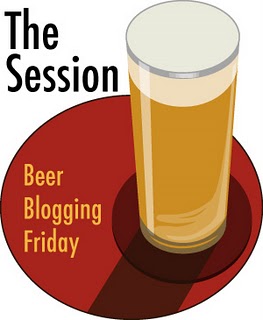
Session Beer is the topic for June.
There are a thousand ways to approach this. What is your definition of a session beer? Is it, as Dr. Lewis suggested at the Craft Brewers Conference this year, “a pint of British wallop” or is your idea of a session beer a crisp Eastern European lager, a light smoky porter, a dry witbier, or even a dry Flemish sour?
Is it merely enough for a beer to be low alcohol to be considered a session beer, or is there some other ineffable quality that a beer must hold in order to merit the term? And if so, what is that quality? Is it “drinkability”? Or something else?
What about the place of session beer in the craft beer industry? Does session beer risk being washed away in the deluge of extreme beers, special releases, and country-wide collaborations? Or is it the future of the industry, the inevitable palate-saving backlash against a shelf full of Imperial Imperials?
What are some of your favorite session beers? When and where do you drink them? If you’d like, drink one and review it.
I am generally a positive craft beer guy. There is too much good stuff out in the craft beer universe to drink for me to rant and/or rave about a real or perceived slight.
But, (and you knew that was coming), I keep waiting for the Session beer train to pull into the station but it is the little engine that just can’t quite make it. The trend just can’t get enough momentum. And as much as I would like to blame the “Imperial Imperials”, I think it is another pair of reasons that stall this category.
First is the puritanical streak our country holds onto with a firm grip and that is inadvertently supported by mainstream water lager advertising. Our culture looks down on massive excess in drinking or eating as much as we can’t stop massively eating and drinking.
Sitting around and having not just a beer but multiple beers while watching the big game or for no reason other than friendship on a Saturday afternoon is considered the realm of the frat boy, the obnoxious lout or the falling down drunk.
There will always be a push for moderation and anything that talks about multiple beers will run afoul of the more extreme forces of “anti”. Major advertising reinforces that with sometimes funny but always wild and crazy party life that is enjoyed by people who buy cases and cases of their low ABV, low flavor near beer. Half the country wants to get their drink on while the other half wants them to shut up and behave like adults. Session beer gets tarred with the brush of excess.
This leads me to my second wild theory. The image of the beer guzzling becomes linked to a certain neanderthal beer drinker. Just as cans were considered gauche and too tied to the image of industrial beer, session beers are considered too macro and not craft or artisan.
Maybe this stems from not wanting to compete against such a massive marketing machine and entrenched consumer buying patterns but I think some brewers and beer geeks have tried to distance themselves from session to avoid seeming too mainstream. It’s easier to have one or two hoppy IPA’s and maintain street cred then it is to drink a few rounds of a session beer that has the appearance of big business due to it’s ABV.
To end on a more positive note, cans are well into becoming cool again. So maybe there is still hope for the humble session beer. Maybe the session itself needs to be separated from the session beer to fully blossom. But I am not going to hold my breath, I am heading to the store to get a case of Full Sail Session in the stubbie bottles.



